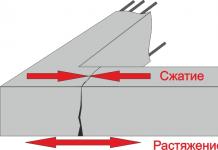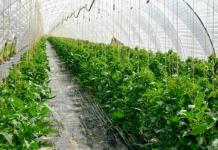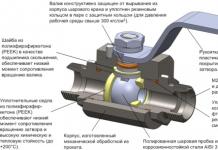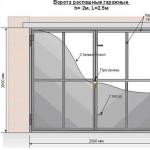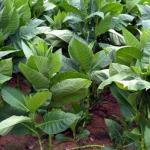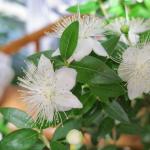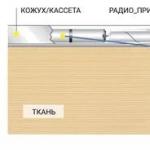Almost every summer resident grows tomatoes in his area. Today, there are many Dutch tomato varieties that can grow and ripen both in a greenhouse and in the open field, even in Siberia and the northern regions. It is only necessary to choose the right variety, study the technology of its cultivation - and the harvest is guaranteed.
Today, tomato varieties of Dutch selection are very popular, which are distinguished by good commercial quality of fruits, resistance to viruses and diseases. They are unpretentious and practically do not require top dressing with expensive fertilizers.
Breeders shared the secrets of the Dutch technology for growing tomatoes, thanks to which you can get a rich harvest:
- To root the plant, not soil is used, but mineral wool. This is explained by the fact that pests are often planted in the earth, for the destruction of which it will be necessary to use special preparations that are harmful to the human body.
- Tomatoes are grown on a small plot of land in bags or containers with a nutrient substrate. Two tomato sprouts are planted per square meter. The distance between sprouts should be about 55 cm, and between rows - 70-90 cm.
- Before sowing seeds, drainage is laid on the bottom of the tank, then moistened mineral soil. From above, the seeds are sprinkled with sand and vermiculite.
- When growing a crop in a greenhouse, it is recommended to run insects into it that will pollinate the plants.
- In order for the bushes to grow healthy and strong, dried, sluggish leaves should be removed from them in a timely manner and unnecessary ovaries should be cut off.
- Seedlings are complexly fed with ready-made fertilizers, which contain all the necessary components.
- The air temperature for plants grown according to the Dutch technology should be within +19 degrees during the day, and at least +17 degrees at night. It is best if during the day there will be a constant temperature within 17-18 degrees Celsius.
- Air humidity in greenhouses should be at least 65-75%. With less moisture, the fruits will grow fibrous and hard.
- Watering is done by drip method, so that the bushes are irrigated from below.
- Harvesting should be done every morning. In order for the late fruits to ripen faster, the stem is smeared with ethylene, and the bushes are covered with a film.
- After harvesting the entire crop, cleaning of shrubs and replacement or disinfection of the earth is required. After that, you can sow new seeds.
Many gardeners for planting choose tomato varieties of Dutch selection, or rather hybrids. And all due to the fact that their yield and disease resistance are much higher than that of most domestic varieties.
This page contains the best Dutch tomato varieties for greenhouses and open ground, short and tall, early and mid-season, with fruits of various colors and tastes.
The disadvantage of Dutch hybrids is that for the most part they lose to varieties in taste, especially if they did not ripen on a bush. They are mainly grown for their excellent yield, disease resistance and good marketability.
Click on the hybrid you like - a page will open with a photo and description of this tomato, as well as reviews of gardeners from different regions about it.
If you have grown any of these hybrids, please leave your feedback on them.
We hope that our catalog will help you choose the best Dutch tomato hybrids for planting.
 Ivanhoe tomato
Ivanhoe tomato
Mid-season, indeterminate, tomato hybrid from Dutch breeders. Recommended for cultivation in film greenhouse structures: for use in two short and extended crops…
Tomato Afen
Early ripe (95-100 days from germination to maturity), indeterminate, high-yielding tomato hybrid for greenhouses. The plant is tall, with short internodes, requires a garter to a support and stepson ...
 Belle tomato
Belle tomato
Medium-early (107-115 days from germination to maturity), tall, carpal tomato hybrid from Dutch breeders. Recommended for growing in greenhouses. Indeterminate plant ...
Benito tomato
Mid-early (95-113 days from germination to maturity), determinate, undersized, high-yielding Dutch tomato hybrid for open ground and film shelters. Bush 50-70 cm high, not t…
 Berberana tomato
Berberana tomato
Early, indeterminate, very productive tomato hybrid of Dutch selection. The bush is tall, with an ordinary leaf. Tomatoes are round, slightly flattened, dense. The color of the ripe fruit is nasy ...
 Tomato Big Beef
Tomato Big Beef
Early maturing, indeterminate (unlimited growth), Dutch hybrid for greenhouses. The period from germination to the beginning of ripening is 99-105 days. The bush is powerful, densely leafy, sprawling, ...
Tomato Bobcat
Mid-early, determinant, productive Dutch tomato hybrid. Recommended for cultivation in open ground, under temporary film shelters, in greenhouses. The bush is strong, well leafy ...
TomatLand5 042 views5 comments
Tomato Debut
An early, determinate, productive Dutch tomato hybrid. Recommended for cultivation in open ground and film shelters. The bush is medium-sized, well leafy, requires a garter to ...
TomatLand1 751 views1 comment
Tomato Tiara
Early ripe, determinate tomato hybrid of Dutch selection for open ground and film shelters. Requires plant formation in 1 or 2 stems. The first inflorescence lays over the 7th leaf, p...
TomatLand1 522 views1 comment
Tomato Donald
Early (80-95 days from germination to maturity), determinant, low-growing carpal tomato hybrid for open ground. Bush up to 50 cm high, does not require pinching. The fruits are round, ditch ...
Tomato Zhenaros
Mid-early, indeterminate, tall Dutch tomato hybrid for greenhouses. The bush is medium leafy, medium tall. The manufacturer recommends forming it into 1 stem, removing all lateral ...
TomatLand573 views3 comments
 Tomato Classic
Tomato Classic
Early maturing (95-105 days from germination to maturity), determinate, high-yielding tomato hybrid for open ground from Dutch breeders. It has good fruit set at high temperatures…
Tomato Corleone
Mid-season, indeterminate, high-yielding, carpal Dutch tomato hybrid. Recommended for growing in greenhouses. The bush is powerful, tall, requires a garter to a support and pinching. P…
TomatLand984 views0 comments
Tomato Lemon Boy
Early, indeterminate, fruitful, carpal, Dutch tomato hybrid for greenhouses. The height of the bush is up to 2 meters, a garter to a support and pinching is required. The manufacturer recommends...
TomatLand694 views0 comments
 Tomato Magnus
Tomato Magnus
Early ripe (95 days from germination to maturity), semi-determinant, high-yielding tomato hybrid from Dutch breeders. Recommended for growing in greenhouses. A densely leafy bush…
 Tomato Martha
Tomato Martha
Mid-season, indeterminate (unlimited growth), productive tomato hybrid. Recommended for growing in greenhouses in the middle lane and in open ground in the southern regions with a mandatory…
TomatLand2 481 views2 comments

Tomato, aka tomato, is one of the most consumed vegetables in the world. It benefits the body both internally and externally. This useful crop is used as a standalone product, to create sauces or tomato pastes, and even as an ingredient in cosmetics. Among the most popular foreign varieties, a special place is occupied by hybrids of selection from Holland. Despite the harsh natural conditions, resistant tomato species have been developed in this country. They have a good and natural taste, resistance to diseases and bad weather conditions, and also bring a rich harvest.
Seed Features
Tomatoes bred in a particular country have distinctive characteristics. Most often this is due to the natural conditions of the places where they were bred. The seeds of the Dutch selection are distinguished by three features:

Varieties are distinguished on several grounds. There are species for growing on open ground and for closed soil (under film or in greenhouses).
Varieties for open ground
An early hybrid of the Dutch tomato with a high yield. It has a very short ripening period and a long period of fruiting. The time from the moment of planting for seedlings to the receipt of the first ripened tomatoes usually fits into 88-92 days. The variety can be grown both on open ground and under the film. The color of the immature fruit is light green, the mature fruit is red. The weight of one fruit varies from 180 to 220 g. The maximum yield can be 9.1 kg per square meter. This variety does not respond to Verticillium and Fusarium wilt.
 Tomato variety "Debut"
Tomato variety "Debut"
Sowing seeds for seedlings should be done 60 days before planting in the ground. The seeds are usually treated with thiram and do not require soaking.
A high-yielding tomato that can endure the harsh natural conditions of the continental climate. Mid-early view (95-110 days between planting seedlings and ripening). The variety is powerful, undersized, the stems are well developed and do not require a garter. The fruits are large and fleshy, weighing about 150-200 g of a rich red hue. They have good taste. Productivity can increase up to 15 kg per 1 sq.m. with proper care.
 Tomato variety "Sultan" Tarpan
Tomato variety "Sultan" Tarpan
The variety is medium early (98-105 days), heat-resistant and large-fruited. Can be grown outdoors and under film cover. The bush is medium in size and compact. The fruits are dense and juicy, have special taste qualities characteristic of pink tomatoes. The mass of an average tomato on open ground reaches 130-160 g, in greenhouse conditions 160-180 g. Ripe fruits have a beautiful pink color (with mother-of-pearl). The variety is not prone to cracking. Harvest brings up to 6 kg per sq.m.
 Tomato variety "Tarpan"
Tomato variety "Tarpan"
This species can be grown with thickening - up to 5 seedlings per 1 sq.m. Fertility grows by 90%, and the size of tomatoes practically does not change.
Mid-early type of tomatoes (107-110 days), used for open ground and greenhouses. The bush is powerful, compact and heat-resistant. It does not require additional shaping, which greatly facilitates its care. The fruits are firm, red in color and high in sugar. The variety is light and not prone to cracking. Resistant to diseases such as alternative stem cancer, gray leaf spot, verticillium wilt. Productivity allows you to collect up to 3 kg from 1 sq.m. with proper care.
 Tomato variety "Tanya" Super Red
Tomato variety "Tanya" Super Red
Early maturing high-yielding variety (65-70 days). The bush is powerful, but compact, requires a garter and shaping. The average fruit weight is 160-200 g with a uniform bright red color. Excellent for growing in hot conditions. Resistant to fusarium and verticillium wilt, tomato mosaic viruses and yellow curl of tomato leaves. It has a high yield potential.
 Tomato variety "Super Red" Polfast
Tomato variety "Super Red" Polfast
Early appearance of tomato (86-91 days). Low growing and high yielding. The fruits are fleshy, bright red in color, weighing up to 150 g. They do not crack during storage and have a good taste. The yield can reach 6.2 kg per sq.m. The variety is not susceptible to fusarium and verticillium. Due to early maturation, it is not affected by phytophthora.
 Tomato variety "Polfast"
Tomato variety "Polfast"
Differs in good zavyazyvayemost at low temperatures. As a result, it is suitable for growing on open soil in the middle climatic zone.
Varieties for greenhouses
When the name of the tomatoes contains the mark "F1" - this indicates that in front of you is not a variety, but a hybrid of a tomato.
Crystal F1
Early (about 90 days before ripening), carpal tomato hybrid. Possesses the increased firmness and force of growth. The plant is tall, with dense foliage, which manufacturers recommend removing, forming a plant in 1 stem. The fruits are dense, fleshy, rich red in color with an average weight of 130-150 g. Each tomato is three-chambered and has a pleasant taste. The variety does not respond to diseases such as verticillium, cladosporiosis and tobacco mosaic virus. The harvest on open soil reaches 8 kg, in the greenhouse - 12.7 kg.
 Tomato variety "Crystal F1"Bobkat F1
Tomato variety "Crystal F1"Bobkat F1
Greenhouse hybrid of late ripeness (about 97 days). The fruits are large, fleshy, red in color, weighing 150-250 g. They have a pleasant taste with sourness. Not susceptible to Stemfilia, Verticillium, Alternaria and Fusarium wilt. Productivity up to 5 kg per 1 sq.m. with good processing. The variety is perfectly preserved and transported over long distances.
 Tomato variety "Bobkat F1"
Tomato variety "Bobkat F1"
Most often, this type is used in the manufacture of tomato sauces and pasta.
Early tomato (90-103 days) for greenhouses and open ground. Requires a garter and the formation of a bush in two or three stems. Fruits of medium density, fleshy, red in color with a weight of 140-200 g. Good tomato taste (for a hybrid). The variety is resistant to elevated temperatures, fusarium, verticillium, tobacco mosaic virus, fusarium, nematode. Yield up to 5.8 kg/sq.m.
 Tomato variety "Skif F1"
Tomato variety "Skif F1"
Bushes can be planted in a compact way, 6-7 pieces per 1 sq.m. Due to the excellent quality and high yield, the variety can be used on an industrial scale.
F1 President
An early and high-yielding hybrid, one of the top five tomatoes for growing in the middle climatic zone. The bush requires a garter and care. It is recommended to leave 1-2 stems. With proper care, you can get a good harvest. The fruits are dense, bright red with a weight of about 200 g. Productivity can increase up to 8 kg from 1 bush with appropriate processing and drip irrigation. The variety is resistant to late blight, Alternaria and other diseases of tomatoes.
 Tomato varieties "President F1"
Tomato varieties "President F1"
The variety does not perceive a number of diseases, therefore it is easily suitable even for growth in a greenhouse with chronically infected soil.
Mid-early variety (110 days) for greenhouses and open planting. The fruits are large, fleshy, weighing up to 300 g with a characteristic tomato flavor. The tomato is resistant to verticillium wilt, nematode, gray spot, tobacco mosaic virus. Other large-fruited tomato varieties are presented in this article.
 Tomato variety "Beef F1"
Tomato variety "Beef F1"
A variety of Beef-tomatoes has some differences in care - a rare planting (large distance between the bushes), more intensive feeding, formation in 1 stem.
Pink Paradise F1
Tomatoes of medium ripeness (about 3 months). The grade is recommended for cultivation in the closed conditions. Plants require garters and pinching (producers advise leaving one stem). Fruits of medium density, pink color, about 200 g. They have a rich sweet taste. The species is resistant to nematodes, verticillium wilt, tobacco mosaic and cladosporiosis. The yield rises to 5 kg from 1 bush with constant care.
Agricultural products require painstaking and constant attention. However, there are varieties and species that are able to "work" without relentless care. One of these plants are the Dutch varieties of tomatoes. Due to their historical homeland, they are stable and unpretentious in care. At the same time, almost all varieties give huge yields. The main thing is to choose the right type. Tomato is a very tasty and healthy vegetable, and with a variety of its varieties, you can always find your “favorite”.
Tomato varieties of Dutch selection are now well known throughout Russia and abroad, for example, in Ukraine and Moldova, where they are successfully grown. Some well-known varieties and hybrids are in the top twenty of the most popular due to their durability, growth vigor, and high yield. Let's talk in more detail about how they differ from domestic varieties, what is their popularity and present to our readers the best Dutch tomatoes that may be on your table.
Features of varietal tomatoes from the Netherlands
Nowadays, on the shelves of stores you can find many varieties and hybrids of tomatoes from various manufacturers. A fairly large market share belongs to companies from the Netherlands, for example, Nunhems, Seminis, Syngenta, Bejo. Among imported seeds, they are certainly leaders.

As an edible crop, tomatoes were not used in Europe until the 18th century, although they were imported from America two and a half centuries before that. As for the Netherlands, despite the heat-loving culture, it quickly took root in this country. Very often, it is for this reason that our gardeners choose Dutch tomato varieties. The Netherlands is a country with a minimum number of sunny days a year, it rains very often, so when crossing, breeders try to develop varieties and hybrids that are resistant to such conditions.
Among the Dutch tomatoes, there are both those that can be grown in greenhouses and those that are intended for open ground. However, do not flatter yourself: for each specific hybrid or variety, it is necessary to withstand the conditions for which it was bred. Disease resistance is a huge advantage, but many domestic tomatoes tolerate most diseases and viruses well, which makes them no less popular.
Important! When choosing seeds, pay attention to the information on the packaging.
For some, the ripening period, taste are important, but for some, the safety of tomatoes, the ability to transport them, or even such a quality as the height of the bush and the complexity of caring for the plant are considered more important.

If you buy seeds of hybrids or varieties in a store, make sure that the information on the package is translated into Russian. Important information:
- tomato resistance to diseases;
- ripening period of tomatoes;
- the size of the plant and fruits;
- yield per bush or square meter;
- use and taste.
Since the competition in the market today is great, new greenhouse farms are built every year, experts advise from time to time to try new selections, including imported tomatoes.
Review of the best varieties of tomatoes
Consider the most popular tomatoes of the Dutch selection in Russia today. They are found on the shelves of most gardening stores. Some gardeners generally do not pay attention to them, believing that imported products are not suitable for growing in our conditions. This statement is incorrect.
Below is a brief table of the main parameters, which is very convenient to navigate. A detailed description of these hybrids and varieties is given below.

Table
Variety/hybrid name Ripening time, in days Type of tomato bush growth Fruit size, in grams Yield, in kilograms per square meter
Important! If there is an F1 mark in the name of the tomato, this means that you have a hybrid, not a variety.
It has a high growth force, but it will not work to collect seeds from such tomatoes for further cultivation.
bobcat

Late-ripening hybrid "Bobkat" is intended for cultivation in the open and protected ground. Most often it is grown for the preparation of tomato paste and sauces. Tomatoes are fleshy, red in color with good taste. Well stored, transported over long distances, safety is 10 days. A hybrid resistant to Verticillium and Fusarium.
The president

The Dutch hybrid "President" is one of the top five varietal tomatoes for growing in Russia. This is no coincidence. It is successfully grown both in open ground and in greenhouses. It is resistant to a whole range of diseases, so it is appropriate to purchase it with chronically contaminated soil in greenhouses and film shelters.
A tomato bush requires care: pinching, shaping. If everything is done correctly, the yield will be very high. Another plus of the hybrid is the excellent taste of tomatoes. Every breeder dreams of breeding such a delicious tomato. The skin of the fruit is dense, which prevents cracking. You can sell such a product as a top-class product.
Shakira

One of the novelties of the Russian market. The new hybrid is represented by fleshy tomatoes with excellent taste. The skin is dense, the tomatoes do not crack. It is necessary to form a plant and stepson it.
Attention! Experts advise growing a hybrid in two stems.
It is necessary to sow tomato seeds in early March, while they do not need soaking and disinfection. They sprout together, each bush reaches one and a half meters.
Polbig

Hybrid "Polbig" is represented by early ripe tomatoes with excellent taste. It grows well both in open sunny areas and in greenhouses. The bush is determinate, of limited growth, so caring for the plant is not very difficult. Three months after the appearance of the first shoots, you can count on a rich harvest.
Hybrid tomato resistant to fusarium and verticillium. The fruits do not crack, are perfectly transported, have an excellent presentation. The use of tomatoes is possible both fresh, in salads, and for canning.
Rio Grande

Describing the best varieties of tomatoes, one cannot help but recall the Rio Grande. This versatile variety is represented by small oval red tomatoes. He is somewhat wary of significant temperature changes, so the greatest success in yield can be achieved if you plant seeds in the southern regions. The germination rate there is so high that it is possible to sow tomatoes directly into the open ground without using the seedling method. The Rio Grande variety can also be grown in film shelters.
The variety of tomatoes is resistant to major diseases, matures for a long time, but the taste will not leave anyone indifferent. Tomatoes do not crack, they can be transported and stored for a long time due to their dense skin. The use is universal. Preservation of this variety is convenient, since the size of the tomato fruit is small.
A good video about this variety of tomato:
Big Beef

Many Russian gardeners are familiar with the Big Beef tomato hybrid that Holland gave us. It is early ripening, ripens in just 73 days, while the yield is extremely high. The bush is of indeterminate type of growth, tall, it must be stepsoned and tied up. Since it is quite sprawling, you should not plant more than 4 bushes of tomato seedlings per square meter.
Tomato fruits have a bright red color, the term "beef" itself in the name indicates the fleshiness of the fruit. The taste is good, the use is universal. The hybrid has achieved particular popularity due to the fact that it is resistant to most dangerous diseases and viruses, including fusarium, verticillium, nematode, alternariosis, TMV, gray leaf spot. Can be grown with soil problems.
Crystal

Very resistant tomato hybrid with high vigor. Tomatoes are dense and resistant to cracking. Since the bush is indeterminate, its growth is unlimited. At the same time, the bush itself is not very tall. When leaving, you will need to tie up and stepson the plant. It is intended for cultivation both in the open, and in the closed ground.
The hybrid "Crystal" is also resistant to cladospirosis. The fruits of this variety are medium in size, have good taste, are used mainly for salads and fresh. Some summer residents believe that this particular tomato hybrid has a pleasant taste, but there is not enough sweetness in it. As you know, there are no comrades for taste and color.
Scythian

Good for a whole range of qualities, the hybrid tomato "Skif" is well known to Russian summer residents. It is intended for cultivation both in open and closed ground. The tomato is resistant to nematodes, verticillium and fusarium.
Despite the fact that tomatoes have a pleasant aroma and excellent taste, they are used mainly for salads and fresh. The bush is compact, seedlings can be planted compactly, 6-7 pieces per square meter. Tomatoes of excellent commercial quality, with high yields, they can be grown on an industrial scale. Professionals collect at least 5 kilograms of excellent tomatoes from one bush.
Jaguar

The jaguar is a hardy tomato hybrid with a short growing season. Just 73 days after the first shoots appear, you can harvest a rich harvest of the highest quality. The main advantage is a high growth force and resistance to a large number of diseases: nematode, verticillium, TMV, fusarium. Due to the fact that the hybrid ripens very quickly, it is not afraid of late blight.
You can use tomato fruits as you like: they are tasty, pickled and pickled, used for processing and juices. Commercial qualities of the hybrid are also high.

In order to finally understand the question of whether Dutch tomato seeds are good, you need to consider the reviews of those summer residents who have grown them more than once.
Reviews of gardeners about varieties and hybrids from Holland
Dutch varieties of tomatoes are distinguished by high resistance to disease. Our short review pointed to this fact. That is why they are often preferred by greenhouse owners. Soil cultivation in film and glass greenhouses is a big problem. In cultivation, tomatoes are often alternated with cucumbers to avoid infection.
Maria Andreeva, Moscow region
I love the hybrid "President" of the Dutch selection, it gives an excellent rich harvest, which completely suits me. Also several times planted "Bull's heart" from Holland of various colors, pink and even black variety type. Tasty, large, but they can only be used for salads. There is no point in preserving them.
Olesya V, Crimean Peninsula
I have been growing tomato seeds from Holland for ten years in open ground. I love Rio Grande very much, they are small and tasty, they make excellent salads. Of the unusual, she took up the cultivation of the Benito hybrid, it seemed that the usual Rio Grande was better. They also planted "Rosaliza", she has beautiful pink fruits, low compact bushes. Dutch tomato varieties are really very resistant. If you plant ten seeds, in the worst case, 8-9 will germinate, and in the best, absolutely everything. For this we love them.
Valery Kim, Volgograd
I have three greenhouses on the site, in one of them I always plant President and Big Beef tomatoes. I love Dutch varieties for two reasons: they grow very well, they are not afraid of any diseases, their durability is excellent, plus excellent commercial qualities. Since I sell 70 percent of the harvest, this is very important for me. Tomato fruits are well stored, do not crack, have a beautiful skin tone and a pleasant shine. It cannot be said that they are tasteless, on the contrary, that very tomato flavor is present, enough sourness and sweetness. I advise you to buy seeds only in specialized stores in good packages, and not from the hands of the market.
Conclusion
Of course, tomato seeds from Holland are now distributed throughout the country and are very popular. This is due to the fact that agricultural companies from this country work for the Russian market, while having vast experience in the field of breeding. Try to observe the growing conditions, and the harvest will delight!
Source
The Dutch have not only excelled in the cultivation of tulips, but have recently gained popularity in the tomato market as the best in the selection of this vegetable in the world. They have developed varieties of tomatoes that are both high-yielding and resistant to various diseases that are characteristic of this delicate vegetable.
The history of the emergence and cultivation of tomatoes in Holland

Many people know that tomatoes came to Europe from the American colonies after the famous discovery of new lands by Columbus.
Many people know that tomatoes came to Europe from the American colonies after the famous discovery of new lands by Columbus. The correct name of the vegetable - tomato - originates from the language of the Aztecs, who so called not only this vegetable, but also the physalis close to it. And the Italians began to call it a tomato, which means a golden apple, because the first fruits were yellow and shone to match the paradise apples. If many Europeans considered tomatoes an ornamental plant, then it was the Italians who first began to eat them, and then even taught the Americans this.
In the middle of the 16th century, this outlandish plant appeared in the gardens of the Dutch, and only in the second half of the 18th century did it gain a foothold in the category of edible vegetable crops. And since then, thanks to crossing and selection, tomatoes have firmly conquered the north of Europe, they began to be grown in Holland and Sweden, where they easily adapted to the harsh climatic conditions of these countries. And in our time, hybrids of tall and medium-sized tomatoes from Holland have gained popularity among gardeners, because they have a real tomato taste and give a big harvest.
Characteristic properties of the best varieties of Dutch tomatoes
For gardeners, the main task is to choose the best variety that will successfully go through all stages of growth and give a large number of tomatoes from the bush.
Such hybrid varieties of tomatoes from Holland are popular:
The large-fruited early ripening Bobcat F1 ripens within a hundred days both indoors and outdoors. The variety is not afraid of a sharp increase in temperature above 30 degrees Celsius, it easily tolerates this, and also has a high resistance to fungal diseases. The fleshy, bright red tomato fruits can be stored for a long time and are not damaged during transportation.
Even earlier, the Crystal F1 variety grows, which is universal in purpose: tasty in salads, pleasant in winter preparations. Three-chamber fleshy fruits of medium size have a high quality taste and perfectly preserve it for a long time. The plant is resistant to diseases such as tobacco mosaic, verticiliosis and cladosporiosis. With proper care from one bush, you can collect up to seven kilograms of delicious fruits.

Especially high-yielding powerful variety of the Dutch selection is President II F1
A particularly high-yielding variety of the Dutch selection is President II F1, which grows best in greenhouses. Dense, slightly ribbed fruits reach a mass of at least three hundred grams. The variety has a high stable protection against diseases caused by various fungi and viruses.
Tomatoes of the Tarpan F1 variety are distinguished by compactness and early ripening. Juicy pink fruits with a pleasant sweet taste are suitable mainly for salads.
Skif F 1 is characterized by high growth, so the main requirement for care is tying bushes to trellises, and early maturity. Tomatoes are not afraid of infection with fusarium, verticillium and nematodes.
The Big Beef F1 variety results in a powerful long-stemmed plant with very large three-hundred-gram fruits, which, unlike other hybrids, have a pronounced tomato flavor.
This Dutchman is comfortable in any conditions: both in equipped greenhouses and in open ground using stakes and trellises.
Punto 7 F1, similar to the Cherry variety, strikes with a pleasant taste, is especially good for making ketchups, various types of sauces and salads, and is indispensable in canning.
The hybrid is not afraid of all known diseases that most often affect tomatoes.
Varieties Polfast and Polonaise are the most ultra-early: they delight with fruits two months after planting. They have such an excellent quality as a characteristic good fruit set even at low air temperatures.
The main characteristic of Dutch tomato hybrids is their ability to be resistant to diseases that most often affect tomatoes and to adverse climatic conditions.

The main characteristic of Dutch tomato hybrids is their ability to be disease resistant.
Advantageous features of the Dutch technology for growing tomatoes
The main thing in growing any vegetable, including tomatoes, is to get a rich harvest with a minimum of physical and material costs for this. And Dutch breeders showed how to achieve this by developing a special technology for growing tomatoes.
On a small area, using bags filled with a nutrient substrate, you can collect over sixty kilograms of tomatoes from one square meter.
The soil basis for growing vegetables is mineral wool instead of earth, which leads to the fact that the risk of infection of tomatoes with various diseases is reduced.
In greenhouses, according to the Dutch method, the cultivation of a delicious vegetable takes place all year round. A plant grown according to Dutch technology must meet certain requirements. The pedicel of such tomatoes should be short with a bunch of flowers hanging down. On the first brush, the number of leaves should not exceed ten, and the stem of the vegetable should be of medium thickness with correctly located internodes.
To get fruits from high-yielding, disease-resistant varieties of tomatoes, you need to put a lot of effort and patience.

To get fruits from high-yielding, disease-resistant varieties of tomatoes, you need to put a lot of effort and patience.
The main secrets of growing tomatoes include the following:
- Remove diseased and damaged leaves from plants in time.
- Pruning extra ovaries, otherwise the tomato will not have enough strength to grow all the fruits.
- For high-quality pollination, it is good to run insects into the greenhouse: wasps, bumblebees.
- Set aside every morning for harvesting. Cover the bushes with the last fruits with a film or smear the stems with ethylene, which will allow them to ripen faster.
- For better preservation, the crop is folded into boxes or baskets, laying their foam on the bottom.
After harvesting the fruits, the greenhouses are cleared of bushes, the soil is disinfected or replaced completely and the seeds are planted again.
Selecting a place and creating conditions for the successful growth of a tomato
An ideal place for growing seedlings of Dutch tomato varieties is a spacious greenhouse, which has conditions for air temperature control and ventilation. Before planting plants or seedlings in the room, it must be heated to the desired level so that the soil constantly maintains a temperature of at least 15 degrees above zero.
For planting seeds, pots are used in the form of cassettes with holes in the bottom in order to remove excess moisture. The bottom of the container should be filled with a drainage layer, and then mineral wool is placed, adding fertilizer to it. The entire composition is moistened, and Dutch tomato seeds are placed in it, and a thin layer, not more than a centimeter, of sand mixed with vermiculite is covered on top. To create the desired humidity, the pots are covered with either glass or film, and then removed to a shaded place.

Containers with plants should be placed just above ground level.
After two weeks, the shoots that have appeared can be transplanted to a permanent place, in prepared containers or bags.
Containers with plants must be placed just above the ground level, then the seedlings of tomatoes are not afraid of pests and other damage.
In a greenhouse, there should be no more than three plants per square meter, otherwise they will not have enough light.
To harvest Dutch tomatoes all year round in a greenhouse, heating system pipes are laid on top of it. Due to this, the air and soil temperature will be within 18 degrees above zero. Comfortable temperature conditions will help ensure the development of a strong root system and prevent shedding of flowers and ovaries. And the fruits of tomatoes at the same time will be large, rich in color.
It is also necessary, in order to obtain a good harvest, to organize air exchange in the room where tomato sprouts develop. Fans installed in the greenhouse are ideal for this. A prerequisite for obtaining tasty fruits is air humidity, it should not be lower than fifty percent.
The use of carbon dioxide for better plant photosynthesis is also the main component for obtaining a high yield.
Some varieties of tomato from Holland can be planted in open ground. But for this, it is desirable to process the seeds before planting, protecting them from viral and fungal attacks in the future. The seeds are soaked overnight in a solution of wood ash, or sodium humanate, or nitrophoska. After that, the seed material is placed in clean water, and after washing for two days - in the refrigerator. After such treatment, the plants will be resistant to both diseases and slight drops in air temperature.

After the threat of frost has passed, the prepared tomato seedlings are planted in open ground.
After the threat of frost has passed, the prepared tomato seedlings are planted in open ground. This must be done with special attention so as not to damage the root system of young plants. Roots with lumps of soil are carefully placed in the holes so that the leaves are at least two centimeters above the ground, then the tomato stems will not come into contact with the soil and avoid the possibility of infection.
Creating special conditions for tomatoes of Dutch varieties will increase the yield of the vegetable throughout the year.
Follow the rules for caring for tomatoes - the basis of a rich harvest
Gardeners-practitioners believe that the main condition for the proper development of tomatoes is the choice of the best option for watering tomato bushes. Irrigation of the plant from below by drip is the most effective method of watering. To do this, plastic pipes with special perforations are laid along the grooves, to which a watering hose is easily attached.
But the irrigation calendar depends on many conditions: on the ambient temperature, the rate of evaporation of moisture from the soil surface and solar activity. The water needed for watering a tomato is taken either rain or at room temperature.
At the very beginning, it is advisable to drink the transplanted tomato seedlings with salt water in order to slightly increase the electrical conductivity of the plants.
Pruning extra flowers on the bush is also necessary for the active growth of the tomato. They usually leave five flowers on the first two brushes, and six on the others. Pollinating with the help of insects, you can achieve an increase in the number of fruits from the bush. If it is not possible to carry out such pollination, then you can simply shake the brush with flowers in the greenhouse, and then ventilate the greenhouse.
It is imperative to form a bush in tomato hybrids, preventing the stepchildren from developing and leaving the main stem. This usually refers to indeterminate types of tomato, the stem of which can grow indefinitely. And you can’t do without tying it to stakes or on trellises. But determinant tomatoes stop growing in length after five flowering brushes begin to tie. Therefore, they do not require any pinching or tying when growing in greenhouses. But for species growing in the garden, you will have to tie it up, otherwise the stem will not support the weight of a large number of fruits.

Removing stepchildren is a crucial moment in the care of tomatoes
Removing stepchildren is a crucial moment in caring for tomatoes. Leaving a few stems on the plant produces more fruits, but they will be small in size and of poor quality. In warm, dry summers, up to three stems are left at the vegetable, and in hot and humid summers, no more than two.
Dutch breeders pay great attention to plant nutrition without introducing it under the root, because through the leaves the necessary substances will be absorbed faster by the vegetable. Once a week, it is necessary to spray the tomato bushes with a solution of magnesium or boron.
With a lack of calcium in the soil, the fruits will begin to rot and ripen unevenly. Then spraying with a filtered solution of wood ash comes in handy.
To speed up the process of fruit ripening, it is necessary to remove the leaves above them to avoid shading.
As soon as the tomatoes reach ripeness, they begin harvesting in the morning four times a week. In winter, tomatoes in greenhouses will look less ripe, but it will already be possible to pick them from the bush. In order for them to ripen, they must be placed in a dark room with high air temperature.
After all the fruits have been harvested, it is necessary to carry out a general cleaning in the greenhouse, removing all old, dry bushes and tilling the soil. Then it is possible to start anew sowing work for growing the next batch of tomatoes.
While watching the video, you will learn about caring for tomatoes.
When choosing Dutch tomato seeds, many gardeners choose a guarantee of quality and a good harvest. The market is replete with varieties of Dutch selection, which allows you to choose the type of tomato that is characterized by a high percentage of yield, fruit strength, the ability to withstand transportation, adapt to growing conditions and excellent taste.
Noticed an error? Select it and press Ctrl+Enter to let us know.
Bred in Holland, not the first year are in demand among gardeners.
This culture is used both for eating raw, without any heat treatment, and for preparing many dishes. The popularity of the tomato is undoubtedly not deprived.
Therefore, many prefer to grow a plant at hometo be sure that the fruits do not contain anything superfluous.
Today we will figure out how the Dutch tomato differs, how it conquered gardeners, what features and advantages it has, and also consider some of the varieties.
Peculiarities
For the first time on the tables of Europe, the tomato appeared in the 18th century, and since then it has been used in the preparation of various dishes - from soups, salads and main dishes to desserts.
Did you know? For the previous two centuries, this plant was not edible, since the climate of many countries did not differ in warm weather, the tomato simply did not have time to ripen. Therefore, they landed him in. The taste of tomatoes was discovered by the Italians - they began to use the pulp of the fruit in the preparation of salads. They also contributed to the emergence of the word "tomato", although initially the plant was called nothing more than "tomato".
As you know, the plant is thermophilic, demanding on the climate. It is all the more surprising that this culture was able to take root perfectly in the vastness of Holland. This country is not famous for a large number of sunny, warm days a year, there is also a lot of precipitation, however, it is the Netherlands that is today considered one of the best suppliers of tomato seeds in the world.  Dutch breeders did their best and brought out such a hybrid of tomatoes that would adapt to their climate and give a good harvest. Dutch varieties of tomatoes are suitable for growing both in greenhouses and in the usual garden bed.
Dutch breeders did their best and brought out such a hybrid of tomatoes that would adapt to their climate and give a good harvest. Dutch varieties of tomatoes are suitable for growing both in greenhouses and in the usual garden bed.
However, not all of them are intended for both open ground and greenhouse conditions at the same time. Therefore, you need to pay attention to the label and study the information about the variety you have chosen in order to be able to provide it with the right care and choose the most suitable option for yourself.
Among the characteristics of a tomato, you can find any - from its ripening period, the size of the bush and fruits, productivity to the description of taste.
Important! In areas with a cold climate, it is worth giving preference to growing a crop in a greenhouse, even if the label indicates that the variety is suitable for planting in open ground. Do not forget that a tomato does not tolerate low temperatures well, and a mistake made by a gardener can adversely affect both the growth of the bush and its yield.
 Dutch tomatoes are famous not only for their resistance to cloudy weather, but also for their transportability - they manage to maintain an attractive appearance after transportation, which is important for people who subsequently sell these tomatoes. In addition, the plant has a high resistance to various diseases, which makes it even more popular.
Dutch tomatoes are famous not only for their resistance to cloudy weather, but also for their transportability - they manage to maintain an attractive appearance after transportation, which is important for people who subsequently sell these tomatoes. In addition, the plant has a high resistance to various diseases, which makes it even more popular. Early Dutch
One of the most famous early ripe varieties of Dutch tomatoes is considered. Its distinguishing feature is the size of the fruit. Their minimum weight, which you can observe, will be 200 g, and as a rule, more. Tomatoes grow in the shape of a ball, have a bright red color, as well as pleasant taste. This tomato is used most often for salads. The variety begins to bear fruit quite early - after 100 days from the date of seed germination.  Another positive characteristic can be called high resistance to diseases, among which are tobacco, nematode, gray spot, as well as stem cancer and fusarium wilt. Productivity pleasantly surprises: from 1 sq. m you can get up to 15 kg of fruit if you place no more than 3 bushes on this site.
Another positive characteristic can be called high resistance to diseases, among which are tobacco, nematode, gray spot, as well as stem cancer and fusarium wilt. Productivity pleasantly surprises: from 1 sq. m you can get up to 15 kg of fruit if you place no more than 3 bushes on this site.
True, it will not do without care features that should not be overlooked if you want to get the maximum yield. The plant will require pinching, and the best way to grow a healthy, strong plant is to grow in a single stem.
From the F1 series, you can still distinguish such early ripe varieties as "Crystal", "Tarpan", "Bobkat" and "President II".  Early varieties are good for fresh consumption, but experienced gardeners prefer not to give a lot of land for growing exclusively early tomatoes.
Early varieties are good for fresh consumption, but experienced gardeners prefer not to give a lot of land for growing exclusively early tomatoes.
Medium varieties
It is impossible not to note their versatility: such varieties are not only suitable for fresh consumption, but also perfect for conservation. They account for the largest part of the site. Consider some varieties of medium ripening.
This variety takes root perfectly on the open ground, but during the cold season it still needs to be hidden under. Ripe tomatoes reach a weight of 200 g or more, they resemble a slightly flattened ball in shape, and the fruit is also ribbed.  "Torbay" gives a good harvest, and its taste is pleasantly surprising and in no way inferior to already proven varieties. You can add another important quality to the list of pluses: this variety, thanks to its dense structure, allows you to transport a tomato without much difficulty and not worry about its appearance.
"Torbay" gives a good harvest, and its taste is pleasantly surprising and in no way inferior to already proven varieties. You can add another important quality to the list of pluses: this variety, thanks to its dense structure, allows you to transport a tomato without much difficulty and not worry about its appearance.
The peculiarities of caring for a tomato include the fact that it will need to be tied up and shaped, despite the fact that the height of the bush barely reaches 1 m. It will not grow higher.
The fruits from this variety are also rather big - weighing about 200 g. This tomato attracts attention not only by its size, but by its glossy, red skin color. Just like other varieties, Bomax tolerates transportation well, and it does not affect its appearance in any way. In addition, the fruits can be stored fresh, without any heat treatment for quite a long time - about a month.  "Bomax" refers to those varieties of Dutch tomatoes that are intended for open ground, that is, they can be grown directly in the garden, and it also needs to form a bush.
"Bomax" refers to those varieties of Dutch tomatoes that are intended for open ground, that is, they can be grown directly in the garden, and it also needs to form a bush.
In addition to those listed, varieties under the names "Dundee", "Yaki", "Organza" and "Picolino" are also popular. All of them belong to the F1 series and have an average ripening speed.
Medium varieties sometimes yield a crop a little later, however, it is with such varieties that it is desirable to plant most of the area allotted for this crop. The fruits fall into the conservation season, at the same time they can be consumed without processing.
Late
It is not worth allocating a lot of land for such varieties. They begin to bear fruit later than everyone else, which is not very convenient - after all, you don’t want to wait all season when you can plant early ripe and medium varieties in order to enjoy the taste of tomatoes and shorten the wait.
From late varieties are isolated. These tomatoes do not differ in large sizes - the weight of one fruit will be no more than 100 g. The fruits resemble an elongated plum in shape, have a pleasant red skin color and no less pleasant taste.  The plant is limited in growth and can stretch up to a maximum of 60 cm. With proper care, the yield of bushes planted per 1 sq. m will be about 15 kg. The disadvantages include a long ripening period - about 4 months.
The plant is limited in growth and can stretch up to a maximum of 60 cm. With proper care, the yield of bushes planted per 1 sq. m will be about 15 kg. The disadvantages include a long ripening period - about 4 months.
Did you know? A distinctive feature of the variety is that the fruits are able to ripen, being already harvested. That is, it is not necessary to wait until the tomato on the branch turns completely red.
Practical Benefits
Dutch varieties are justifiably considered among the best. Compared to other tomatoes, they have a lot of advantages. Due to the rather dense structure of the fruits, they perfectly tolerate transportation, and their appearance remains presentable, which is important for wholesale buyers and customers.
Another plus is the choice. Dutch tomatoes have a wide range of varieties, so gardeners have plenty to choose from, while focusing on their capabilities and wishes for culture.
Plants are both low-growing and tall, which require binding to, as well as early, medium and late tomatoes, you can even choose the size of the fruit, since this parameter is different for varieties.  And you can grow Dutch tomatoes both in greenhouses and on open ground. In general, for every taste and color.
And you can grow Dutch tomatoes both in greenhouses and on open ground. In general, for every taste and color.
Other benefits of Dutch tomatoes are discussed below.
Disease and pest resistance
Tomatoes bred in Holland are highly resistant to most of the diseases inherent in tomatoes. This makes life much easier for the gardener, since the plants will not need to be processed to protect them from the onset of symptoms. This saves both time and money, and the effort spent on caring for the culture.
They protect themselves and do not require additional treatments in order to subsequently develop normally and give a good, high-quality harvest. This, of course, is a huge plus, because tomatoes themselves are capricious and need careful care. Dutch varieties have become a pleasant discovery for all tomato lovers.
Resistance is indicated on the seed packaging, so to be sure which diseases do not threaten your bushes, carefully read the information. In general, Dutch tomatoes are resistant to verticillium. Often these varieties and hybrids are protected from tracheomycosis wilt, as well as from the tomato mosaic virus. 
Important! Despite the high resistance of these plants to all kinds of diseases, it is important to ensure that the soil is not infected. Otherwise, the bushes may grow weak, and the crop will lose quality.
Great return on yield per square meter
Another reason why gardeners with experience most often turn to Dutch varieties is their yield. This characteristic is very attractive, since the goal of every plant grower is precisely to obtain the maximum yield.
With tomatoes from Holland, this is not difficult if you provide them with the right care and take into account all the features of the variety you have chosen. As you know, tomato bushes need space, so only 3 bushes can fit on a plot the size of a square meter. You should not try to place more plants on the available footage - this will negatively affect the yield in the first place. they will not receive the required amount of nutrients, and you will not get the maximum that you expected.
In terms of the yield of bushes, Dutch varieties are very profitable. On average, up to 5 kg of fruits can be harvested from one bush, regardless of how large they are and how much they weigh (there are tomatoes from 90 g to 350 g).  If you count, it turns out that the harvest from 1 square. m will be about 15 kg, which is currently considered a fairly good, high result. The maximum yield of bushes located per 1 sq. m, can be more than 15 kg, since the yield also depends on the variety.
If you count, it turns out that the harvest from 1 square. m will be about 15 kg, which is currently considered a fairly good, high result. The maximum yield of bushes located per 1 sq. m, can be more than 15 kg, since the yield also depends on the variety.
Thus, it is absolutely not necessary to plant half or greenhouses with tomatoes alone in order to get a good harvest.
Important! Do not forget that the number of bushes that can be on 1 square. m, also depends on the variety.
The fruits have the shape of a bright red glossy ball and a dense skin, which allows the fruits to successfully endure transportation and not crack. This is very important, given that in most cases, the Elegro tomato is grown specifically for sale on the market.
In addition, the tomato is not prone to fusarium, yellow leaf curl virus, and verticillium wilt. Having immunity to such ailments, the bush will surely grow healthy, beautiful and subsequently give a wonderful harvest.
Overview of the best varieties and hybrids for greenhouses
For countries where the summer is not so warm, we suggest considering Dutch tomato varieties intended for growing in. Also, this option is suitable for you if you want to get a crop all year round - if you make a heated greenhouse, this is quite possible. Below we give the names of varieties and their main characteristics, so that you can choose tomatoes to your liking.
The variety belongs to tall tomatoes, to the indeterminate type of growth. This means that the bush is not limited in growth. He constantly "stretches", so he needs care. It will be necessary to carry out tying up, the formation of a tomato, as well as stepchild bushes without fail.  The harvest brings a large one - one tomato reaches a weight of about 250 g. Outwardly, the fruits look like balls, the skin is dense, has a bright scarlet hue. If you store tomatoes correctly, they will be able to retain their taste for quite a long time - about 2 weeks.
The harvest brings a large one - one tomato reaches a weight of about 250 g. Outwardly, the fruits look like balls, the skin is dense, has a bright scarlet hue. If you store tomatoes correctly, they will be able to retain their taste for quite a long time - about 2 weeks.
Zhenaros is resistant to most of the diseases that a tomato can be susceptible to, which makes it possible to plant a tomato in any area, regardless of the climate. A greenhousein which bushes grow can be made of both glass and film.
"San Marzano"
The proposed variety belongs to the average, since you can get a crop after 3.5-4 months. By this time, the tomatoes will be fully ripe and ready to eat. The main feature of "San Marzano" is the appearance of tomatoes. The fruits are more reminiscent of bright red bell peppers, and this distinguishes them from all varieties that bear fruit with elongated tomatoes. With all this, their weight is not more than 100 g. The plant is resistant to diseases such as Verticillium and Fusarium. And it also tolerates temperature extremes well, which does not affect its growth, the quantity and quality of the crop, as well as the taste characteristics.
The bushes are tall - they reach a height of 1.5 m, so they require such a procedure as tying to the trellis.
This variety was developed by Dutch breeders relatively recently, and it has some differences from most Dutch tomatoes. The fruits ripen early - they will need no more than 2 months for this, which is already pleasing. The fruits can be called large - each weighs approximately 175 g (+/-5 g).  have the shape of a ball, and also differ in color - the red skin also has a pink tint. The skin should be mentioned separately: unlike most other varieties, it is quite thin, so it is best to transport the fruits in the first week so that they retain a beautiful appearance during transportation and are suitable for sale.
have the shape of a ball, and also differ in color - the red skin also has a pink tint. The skin should be mentioned separately: unlike most other varieties, it is quite thin, so it is best to transport the fruits in the first week so that they retain a beautiful appearance during transportation and are suitable for sale.
This variety has a slight sourness, and it does not impair the palatability, which is quite highly rated. Pleases the plant and rich aroma.
Already from the name of the variety it becomes clear that these tomatoes have a lot of features. Indeed, their appearance can be called the most outstanding among all tomatoes - the shape of the fruit resembles a small pear, and the color of the skin is bright yellow. The tendency to cracking in this variety is very low, which allows you to freely transport the crop without depriving it of its presentation. The variety is also valued for its pleasant taste, which is important. And you can get a harvest in about 4 months.  The plant belongs to the indeterminate type, which is why the bush can grow above 1.5 m. Of course, such a tall variety requires proper self-care, namely, it needs to be tied up and shaped. Another feature that is important to pay attention to: 1 sq. m should be no more than 4 bushes. Otherwise, the yield will be less than you would like.
The plant belongs to the indeterminate type, which is why the bush can grow above 1.5 m. Of course, such a tall variety requires proper self-care, namely, it needs to be tied up and shaped. Another feature that is important to pay attention to: 1 sq. m should be no more than 4 bushes. Otherwise, the yield will be less than you would like.
You can grow the Yellow Pear variety exclusively in greenhouse conditions, so even if you live in an area with a warm climate, never try to plant a plant in open ground.
The variety belongs to early ripening - the fruits can be harvested from the bushes after 2.5 months. The crop looks quite large - one tomato weighs about 235 g, has a spherical appearance. Due to the dense skin, the fruits do not crack and have a pleasant appearance for a long time. The color of the tomatoes fluctuates between pink and red and looks somewhat faded. Which, however, does not affect the taste in any way.  Bushes are limited in growth, and also do not tend to grow in breadth. For this reason, for 1 sq. m can grow up to 7 bushes. This will not affect the yield in any way.
Bushes are limited in growth, and also do not tend to grow in breadth. For this reason, for 1 sq. m can grow up to 7 bushes. This will not affect the yield in any way.
The main distinguishing feature of the presented variety is the incredible resistance to almost all possible diseases typical of tomatoes. The plant safely passes the nematode, verticillium, fusarium, brown leaf spot, as well as root rot and tomato mosaic virus. Such persistence is very important if the soil on which you plant the bushes is not disinfected and not prepared in any way for growing plants.
The variety belongs to one of the earliest. You can harvest after 2 months, by which time the fruits will have time to ripen. Tomatoes have a standard ball shape and no less standard bright red color. The fruits are large - each weighs about 250 g. Like most Dutch varieties, Sunrise has a dense skin, which allows it to be transported without any problems, without fear that the fruit will crack and lose its presentation.  You can dispose of the harvest at your own discretion: it is suitable both for eating raw, in salads, and for conservation, making homemade tomato juice or pasta.
You can dispose of the harvest at your own discretion: it is suitable both for eating raw, in salads, and for conservation, making homemade tomato juice or pasta.
The bushes grow quite quickly, and also have good resistance to diseases, namely gray leaf spot, and verticillium. The variety will please not only with its appearance and resistance to ailments, but also with a good harvest - 1 bush is able to bring about 4 kg of tomatoes, which are of high quality, despite the fact that the fruits do not take much time to ripen.  No wonder tomato varieties bred in Holland have taken such a strong position in the market. Gardeners are attracted not only by the pleasant appearance of the fruits, but also by their amazing resistance to diseases, as well as the high yield of bushes. In addition to all this, you can choose the most convenient way of growing - both in a greenhouse and in the open field, which allows you to get a couple of beds of tomatoes even for those who live in a fairly cool area.
No wonder tomato varieties bred in Holland have taken such a strong position in the market. Gardeners are attracted not only by the pleasant appearance of the fruits, but also by their amazing resistance to diseases, as well as the high yield of bushes. In addition to all this, you can choose the most convenient way of growing - both in a greenhouse and in the open field, which allows you to get a couple of beds of tomatoes even for those who live in a fairly cool area.
44
times already
helped
